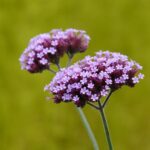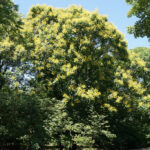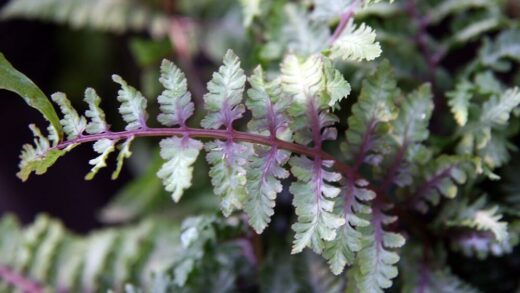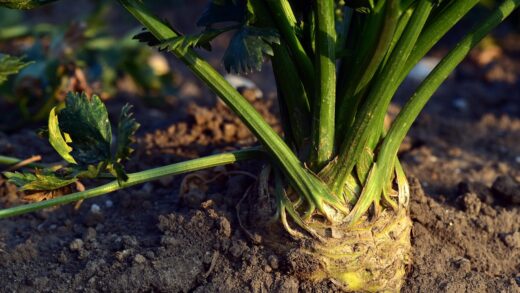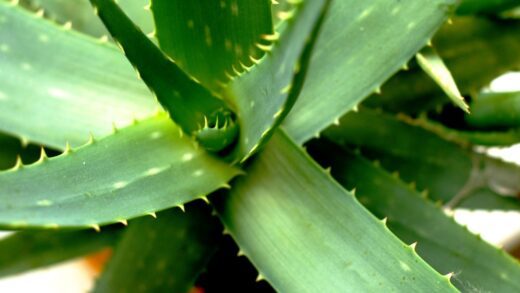The successful establishment and multiplication of German irises begins with a foundational understanding of their unique rhizomatous structure and specific planting requirements. Unlike many perennials that are planted deep within the soil, the German iris rhizome demands a position at or just beneath the soil surface, where it can be warmed by the sun. This crucial detail is paramount for preventing rot and initiating the development of future flower buds. The ideal time for planting and transplanting is in late summer to early autumn, from July through September, which allows the plant ample time to establish a robust root system before the ground freezes, ensuring its survival through winter and vigorous growth in the spring.
Proper site preparation is a non-negotiable prerequisite for a thriving iris bed. These plants are unforgiving of poor drainage, and any location where water tends to collect is unsuitable. The soil should be cultivated to a depth of at least 25-30 centimeters, breaking up any compaction and allowing for the incorporation of amendments. For heavy clay soils, integrating coarse sand, fine pine bark, and compost will dramatically improve the structure and porosity, creating the well-drained environment that irises crave. A soil test to check the pH is also advisable, as irises prefer a neutral to slightly acidic range, and adjustments can be made during this preparatory stage.
When planting a new rhizome, creating a small mound of soil in the center of the planting hole is a classic and effective technique. The rhizome is placed on top of this mound, allowing the roots to be spread out down the sides into the surrounding soil. The hole is then backfilled, making sure that the top of the rhizome remains visible or is covered by no more than a centimeter of soil in very hot climates. The spacing between rhizomes is also important; planting them approximately 30-60 centimeters apart provides adequate room for growth and good air circulation, which is vital for disease prevention.
Propagation of German irises is most commonly and effectively achieved through division, a process that should be undertaken every three to five years. This not only increases the stock of plants but is also essential for maintaining the health and flowering vigor of the clump. As the clump matures, the central, older rhizomes become less productive and the planting becomes overcrowded. By dividing the clump, discarding the old portions, and replanting the young, healthy rhizomes from the periphery, the gardener essentially rejuvenates the entire planting, guaranteeing a spectacular display for years to come.
Optimal timing and site preparation
The window for planting and dividing German irises is strategically timed to align with their natural growth cycle. The period from mid-summer to early autumn, after the plant has completed its flowering and entered a state of semi-dormancy, is the universally recognized best time for this activity. This timing gives the newly planted or transplanted rhizomes several weeks of warm soil to encourage the development of new roots, which are essential for anchoring the plant and absorbing moisture and nutrients before winter arrives. Planting too late in the autumn risks the plant not having enough time to establish, making it vulnerable to frost heave and winter damage.
More articles on this topic
Site preparation must prioritize drainage above all else. A location that receives at least six hours of direct sunlight is fundamental, but this must be paired with soil that sheds water readily. To prepare a new bed, the area should be cleared of all weeds and grass, and the soil should be thoroughly loosened with a garden fork or tiller. This is the ideal time to incorporate organic matter, such as well-rotted compost, which improves soil structure without adding excessive nitrogen. For dense, clay-based soils, the addition of inorganic materials like coarse builder’s sand or fine gravel is critical to create the porous texture necessary for healthy rhizome development.
Creating raised beds is an excellent strategy for gardens with inherently poor drainage or heavy clay soil. Elevating the planting area by even 15-20 centimeters can make a significant difference in how quickly the soil drains after heavy rainfall. The soil used to fill the raised bed can be specifically mixed to create the ideal loamy consistency that irises prefer. This controlled environment ensures that the rhizomes will never be subjected to the waterlogged conditions that are so detrimental to their health.
Before planting, the final step in site preparation is to ensure the soil surface is level and raked smooth. It is generally recommended to avoid adding high-nitrogen chemical fertilizers to the planting hole itself, as this can burn the new roots and encourage rot. Instead, a light dusting of a low-nitrogen, high-phosphorus fertilizer, such as bone meal or a superphosphate, can be worked into the surrounding soil to encourage strong root and flower development. With a well-drained, sun-drenched, and properly prepared site, the irises are positioned for immediate and long-term success.
The correct planting technique for rhizomes
Achieving the correct planting depth is the most critical aspect of the entire process for German irises. The rhizome, which is the thick, fleshy part of the root system, must be positioned so that its top surface is exposed to the elements. A common mistake is to bury the rhizome like a bulb, but this will almost certainly lead to a lack of flowers and a high probability of rot. The proper technique involves digging a shallow hole, wide enough to accommodate the roots, and then forming a small ridge or mound of soil down the center of the hole.
More articles on this topic
Once the mound is created, the rhizome is placed directly on top of it, much like a saddle on a horse. The roots are then carefully arranged, fanning them out on either side of the mound so they point downwards into the soil. This positioning ensures that the rhizome itself remains high, while the roots are able to penetrate the soil to find water and nutrients. This specific arrangement is key to the plant’s stability and its ability to absorb what it needs without compromising the health of the rhizome.
After the rhizome and roots are positioned correctly, the hole should be backfilled with soil, gently firming it around the roots to eliminate any large air pockets. As the soil is added, care must be taken to not cover the top of the rhizome. In most climates, the top one-third to one-half of the rhizome should remain visible above the final soil level. In regions with extremely hot, intense summer sun, a very light covering of soil, perhaps just one or two centimeters, may be permissible to prevent sunscald, but full exposure is generally preferred.
The orientation of the rhizome in the ground also matters. Each rhizome has a “fan” of leaves at one end. When planting multiple rhizomes, it is good practice to face all the leaf fans in the same direction, typically away from the center of the planting area. This allows the new rhizomes, which will develop from the base of the fan, to have open space to grow into, preventing the clump from becoming overcrowded too quickly. This thoughtful positioning sets the stage for organized and healthy growth in the years to come.
Post-planting care for establishment
Immediately after planting, the most important task is to water the new irises thoroughly. This initial deep watering is not just about providing moisture; it is crucial for settling the soil firmly around the roots and eliminating any air pockets that may have formed during backfilling. This direct soil-to-root contact is essential for the new anchor roots to begin their growth and start drawing water from the surrounding earth. This first watering should be significant enough to moisten the soil to a depth of at least 15-20 centimeters, ensuring the entire root zone is hydrated.
Following the initial watering, a consistent moisture level must be maintained for the next several weeks to encourage robust root establishment before winter. This does not mean keeping the soil constantly saturated, which would be harmful. Instead, the goal is to allow the top few centimeters of soil to dry out before watering again, typically providing a deep soaking about once a week in the absence of rain. This deep and infrequent watering encourages the roots to grow downward in search of moisture, creating a more resilient and drought-tolerant plant in the long run.
It is important to resist the urge to fertilize newly planted irises. The rhizomes contain a significant store of energy, and providing them with a balanced diet from a well-prepared soil is sufficient for their initial establishment. Adding fertilizer at the time of planting, especially high-nitrogen formulas, can burn the delicate new roots and may stimulate weak, leafy growth instead of the desired strong root system. If the soil is particularly poor, a low-nitrogen fertilizer can be applied in the following spring, once new growth is clearly visible.
Monitoring the new plantings for stability is also a part of post-planting care. The trimmed foliage reduces the risk of wind rock, but strong winds can still sometimes dislodge a rhizome before its roots have taken hold. A gentle check to ensure the rhizome is still firm in the ground is a good practice, and any that have been loosened can be gently pressed back into place and the soil firmed around them. This attention to detail during the establishment phase will pay dividends with healthy, vigorous plants the following spring.
The principles of division for propagation
Division is the primary and most reliable method for propagating German irises, allowing gardeners to multiply their collection and maintain the vigor of their existing plants. The underlying principle of division is based on the plant’s natural growth habit. An iris rhizome is a perennial stem that grows horizontally, and each year it produces new offshoots, or “increases,” which will mature to become the flowering parts of the plant in subsequent seasons. Over time, the original rhizome becomes old and woody, losing its ability to produce flowers, while the new offshoots on the periphery take over. Division is simply the process of separating these young, vigorous offshoots to create new, independent plants.
The timing of division is critical and is dictated by the iris’s annual cycle. The ideal time is during its summer dormancy, typically four to six weeks after the blooming period has ended. At this point, the plant has had sufficient time to store energy in the new rhizomes, but it has not yet begun to produce the delicate new roots for the following season’s growth. Dividing during this window minimizes the stress on the plant and provides the new divisions with the best possible chance to establish themselves before winter. Attempting to divide irises when they are in active growth in the spring can severely set back their development and sacrifice that year’s bloom.
The purpose of division extends beyond mere propagation; it is a vital horticultural practice for rejuvenation. When an iris clump becomes overcrowded, the rhizomes are forced to compete for limited resources such as sunlight, water, and nutrients. This competition leads to a noticeable decline in the number and size of the flowers, and the center of the clump may even become bare and unproductive. By dividing the clump, the gardener removes the old, spent rhizomes and gives the young, productive ones the space and resources they need to thrive, effectively resetting the clock on the plant’s performance.
When selecting which parts of the clump to propagate, the focus should always be on the healthiest and most robust rhizomes. A good candidate for a new division will be a firm, solid rhizome, free from any soft spots, holes, or signs of disease. It should have a healthy fan of leaves and a visible network of feeder roots. Discarding any rhizomes that are soft, shriveled, or show evidence of iris borer damage is a crucial step in ensuring that only healthy plant material is used for propagation, preventing the spread of potential problems to new areas of the garden.
Step-by-step guide to dividing irises
The process of dividing German irises begins with the careful excavation of the entire clump. It is best to use a garden fork rather than a spade, as a fork is less likely to slice through and damage the rhizomes. Insert the fork into the soil at a distance of about 15-20 centimeters from the edge of the clump and gently work your way around, loosening the soil and prying the clump upwards. Once it is sufficiently loose, lift the entire mass of rhizomes and soil out of the ground and move it to a comfortable working area, such as a tarp on the lawn.
With the clump out of the ground, the next step is to clean the rhizomes so you can clearly see what you are working with. Gently shake off as much loose soil as possible, and then use a stream of water from a hose to wash away the remaining dirt. This will reveal the entire network of interconnected rhizomes, making it easy to distinguish the old, woody central parts from the younger, vigorous offshoots on the outside. This is also the time to perform a thorough inspection for any signs of disease or pests.
Now, begin the actual division. The rhizomes can often be pulled apart by hand, but a clean, sharp knife or a sturdy pair of secateurs is useful for tougher connections. Your goal is to create new divisions, each consisting of a single, healthy rhizome with one or two fans of leaves attached. Cut away and discard the old, leafless rhizome from the center of the original clump, as it has finished its life cycle. Any rhizomes that feel soft or mushy, or have holes from iris borers, should also be discarded to prevent the spread of problems.
The final step is to prepare the new divisions for replanting. Trim the leaves back to a height of about 10-15 centimeters, cutting them in an inverted “V” shape to create a fan. This reduces water loss while the plant re-establishes its root system and prevents wind from loosening the new planting. Trim any overly long or damaged roots back to a few centimeters. The divisions are now ready to be replanted in a newly prepared bed or shared with other gardeners, following the correct shallow planting technique to ensure their future success.












